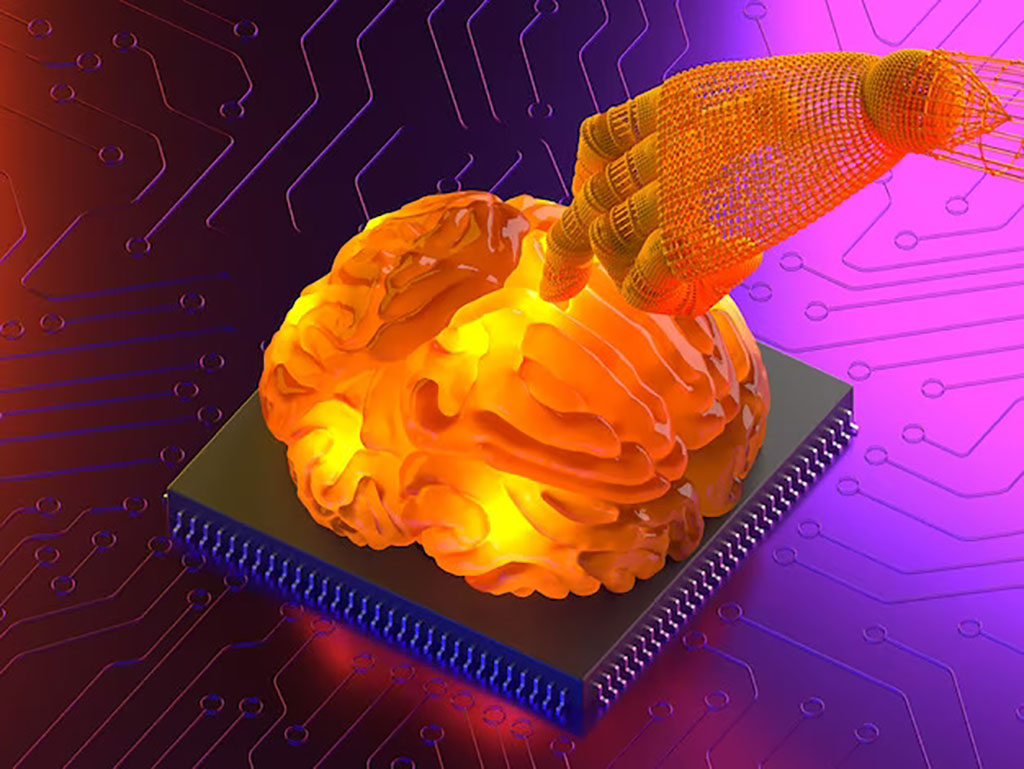Machine Learning Algorithm Diagnoses Stroke with 83% Accuracy
|
By HospiMedica International staff writers Posted on 11 Apr 2023 |

Stroke is one of the most frequently misdiagnosed medical conditions, and prompt detection is crucial for effective treatment. Patients treated within an hour of symptom onset have a higher chance of survival and avoiding long-term brain damage. Data reveals that Blacks, Hispanics, women, older adults on Medicare, and rural residents are less likely to be diagnosed within this critical timeframe. Existing pre-hospital stroke scales overlook about 30% of cases. New research has shown that a machine learning (ML) algorithm, utilizing hospital data and social determinants of health data, can diagnose a stroke quickly—before laboratory test results or diagnostic images become available—with 83% accuracy. This finding suggests the possibility of reducing stroke misdiagnosis and enhancing patient monitoring, enabling medical staff to identify stroke patients or those at risk sooner and improving patient outcomes.
Researchers at Florida International University (Miami, FL, USA) developed the ML algorithm for better stroke diagnosis utilizing data from suspected stroke patients, such as age, race, and number of underlying conditions. Social determinants of health (SDoH) are non-medical factors like race, income, and housing stability that influence a wide range of health outcomes. The researchers utilized emergency department and hospitalization records from Florida hospitals between 2012 and 2014, combined with SDoH data from the American Community Survey, to create the ML stroke prediction algorithm. Their analysis included 143,203 unique patient hospital visits. Stroke-diagnosed patients were typically older, had more chronic conditions, and primarily relied on Medicare.
With the researchers' ML algorithm, when a patient arrives at a hospital with stroke or stroke-like symptoms, an automated, computer-assisted screening tool quickly analyzes the patient's information. If the algorithm predicts a high risk for stroke, a pop-up alert is triggered for the emergency department team. Current ML methods often focus on interpreting clinical notes and diagnostic imaging results, which may not be available upon patient arrival, especially in rural and underserved communities. This technology is presently undergoing pilot testing in the emergency departments of various prominent healthcare systems.
"As we add more data it's learning data," said Min Chen, associate professor of information systems and business analytics at FIU Business and one of the researchers. "Our algorithm can incorporate a lot of variables to analyze and interpret complex patterns, which will allow emergency department care teams to make better and faster decisions."
Related Links:
Florida International University
Channels
Critical Care
view channel
AI-Powered, Internet-Connected Medical Devices to Revolutionize Healthcare, Finds Study
A new study suggests that artificial intelligence (AI)-powered, internet-connected medical devices have the potential to transform healthcare by enabling earlier detection of diseases, real-time patient... Read more
Starfish-Inspired Wearable Tech Enables Smarter Heart Monitoring
Physical movement can make it challenging for current wearable devices to accurately track heart activity. Now, a starfish’s five-arm shape has helped resolve this issue. Inspired by the starfish's ability... Read moreSurgical Techniques
view channel
New Transcatheter Valve Found Safe and Effective for Treating Aortic Regurgitation
Aortic regurgitation is a condition in which the aortic valve does not close properly, allowing blood to flow backward into the left ventricle. This results in decreased blood flow from the heart to the... Read more
Minimally Invasive Valve Repair Reduces Hospitalizations in Severe Tricuspid Regurgitation Patients
The tricuspid valve is one of the four heart valves, responsible for regulating blood flow from the right atrium (the heart's upper-right chamber) to the right ventricle (the lower-right chamber).... Read morePatient Care
view channel
Portable Biosensor Platform to Reduce Hospital-Acquired Infections
Approximately 4 million patients in the European Union acquire healthcare-associated infections (HAIs) or nosocomial infections each year, with around 37,000 deaths directly resulting from these infections,... Read moreFirst-Of-Its-Kind Portable Germicidal Light Technology Disinfects High-Touch Clinical Surfaces in Seconds
Reducing healthcare-acquired infections (HAIs) remains a pressing issue within global healthcare systems. In the United States alone, 1.7 million patients contract HAIs annually, leading to approximately... Read more
Surgical Capacity Optimization Solution Helps Hospitals Boost OR Utilization
An innovative solution has the capability to transform surgical capacity utilization by targeting the root cause of surgical block time inefficiencies. Fujitsu Limited’s (Tokyo, Japan) Surgical Capacity... Read more
Game-Changing Innovation in Surgical Instrument Sterilization Significantly Improves OR Throughput
A groundbreaking innovation enables hospitals to significantly improve instrument processing time and throughput in operating rooms (ORs) and sterile processing departments. Turbett Surgical, Inc.... Read moreHealth IT
view channel
Printable Molecule-Selective Nanoparticles Enable Mass Production of Wearable Biosensors
The future of medicine is likely to focus on the personalization of healthcare—understanding exactly what an individual requires and delivering the appropriate combination of nutrients, metabolites, and... Read more
Smartwatches Could Detect Congestive Heart Failure
Diagnosing congestive heart failure (CHF) typically requires expensive and time-consuming imaging techniques like echocardiography, also known as cardiac ultrasound. Previously, detecting CHF by analyzing... Read morePoint of Care
view channel
Handheld, Sound-Based Diagnostic System Delivers Bedside Blood Test Results in An Hour
Patients who go to a doctor for a blood test often have to contend with a needle and syringe, followed by a long wait—sometimes hours or even days—for lab results. Scientists have been working hard to... Read more
Smartphone-Enabled, Paper-Based Quantitative Diagnostic Platform Transforms POC Testing
Point-of-care diagnostics are crucial for public health, offering rapid, on-site testing that enables prompt diagnosis and treatment. This is especially valuable in remote or underserved regions where... Read moreBusiness
view channel
Expanded Collaboration to Transform OR Technology Through AI and Automation
The expansion of an existing collaboration between three leading companies aims to develop artificial intelligence (AI)-driven solutions for smart operating rooms with sophisticated monitoring and automation.... Read more



















